The Cogshall Mango Tree makes this dream surprisingly achievable—even in smaller spaces. Compact, disease-resistant, and bursting with tropical flavor, it’s the perfect choice for Florida gardeners and mango lovers alike.
To successfully nurture a Cogshall mango tree, we can follow five key steps that will help you along the way:
It's important to remember that these practices—like ensuring adequate sunlight, proper soil drainage, and consistent care—are essential for fostering healthy growth and maximizing fruit production.
Many gardeners face challenges when growing mango trees, and it's perfectly normal to feel a bit overwhelmed. By acknowledging these concerns, we can explore solutions together. For instance, ensuring that your tree receives enough sunlight and has well-draining soil can make a world of difference. Regular care is not just a task; it’s an opportunity to connect with your plant and witness its growth.
As you embark on this gardening journey, remember that you’re not alone. Each step you take brings you closer to the joy of watching your mango tree flourish. With patience and dedication, you can cultivate a thriving environment for your tree. Let’s embrace this process together and enjoy the fruits of your labor!
1. Understand the Growing Conditions for Cogshall Mango Trees
Cogshall mango trees flourish in warm, tropical climates, ideally nestled within USDA hardiness zones 10a to 11. They thrive on full sun exposure, basking in at least 8 to 10 hours of direct sunlight each day. A well-draining soil is essential, with a pH level between 5.5 and 7.5; sandy loam is preferred, as it permits adequate drainage while retaining the moisture these plants need. Remember, they are sensitive to frost; exposure to temperatures below 30 degrees Fahrenheit can cause significant harm or even lead to their demise. Thus, planting in sheltered areas, away from cold winds, is a wise choice.
As you embark on your gardening journey, expert horticulturists emphasize the importance of gradually acclimating seedlings to sunlight. As one knowledgeable gardener wisely puts it, "When transplanting, don't shock your seedlings with a full-sun barrage. Acclimate them gently, or they'll throw a leafy tantrum." This nurturing practice is crucial for healthy growth, minimizing stress and encouraging robust development.
When it comes to propagation, it's vital to remember that
seeds are only viable for a few days after the fruit ripens. This is important information for gardeners considering growing from seed. Regarding irrigation, these plants aren't excessively thirsty but do need extra moisture during their fruit development. Consistently monitoring moisture levels before watering is key to preventing overwatering, which can hinder growth during these crucial phases. Successful cultivation stories in USDA zones 10a to 11 show that with the right care—paying attention to sunlight and soil conditions—the cogshall mango tree varieties can thrive and yield a bountiful harvest.
For those in cooler regions, consider growing dwarf fruit plants to enhance heat exposure. Using darker-colored containers, ensuring proper drainage, and insulating pots with bubble wrap during colder months can help protect these plants from frost. Keeping pots indoors or in a greenhouse during winter is also a great way to maintain optimal growing conditions. Additionally, adhering to appropriate watering practices is essential for the well-being of dwarf fruit plants, as they require careful moisture control to flourish. Remember, you are not alone in this journey; with patience and care, your gardening dreams can blossom beautifully.
2. Prepare the Planting Site for Optimal Growth
To successfully
cultivate a cogshall mango tree, let’s start by selecting a sunny spot that offers protection from strong winds. Clearing the area of debris, rocks, and weeds creates a welcoming environment for your new plant. Dig a hole that is twice as wide and deep as the root ball, providing ample space for those roots to expand and thrive.
Next, let’s enhance the fertility and drainage of the soil by mixing in some organic compost. If you’re dealing with dense clay, consider adding sand or perlite to improve drainage—this is crucial for the health of your mango plant. Remember, elevating the planting site can also prevent water from pooling around the roots, which is essential to avoid root rot.
Did you know that suitable soil enhancements can significantly boost your planting success? Many gardeners have observed better growth and yield by following these practices. For instance, in Broome, tropical fruits can be planted year-round, highlighting the importance of proper site preparation regardless of the season. Successful case studies show that well-prepared planting locations lead to healthier plants and more fruitful harvests. As Kiersten Rankel wisely notes, 'The ideal period to plant your Tommy Atkins variety is from late spring to early summer,' and this advice also applies to planting the cogshall mango tree. By following these nurturing practices, you can create the perfect setting for your cogshall mango tree to flourish and bring joy to your garden.
3. Plant the Cogshall Mango Tree Correctly
To successfully plant your cogshall mango tree, begin by gently removing it from its container, taking care to disturb the roots as little as possible. Position the tree in the center of a hole that is
three to four times the diameter and three times as deep as the root ball. This best practice for planting the cogshall mango tree ensures there is ample space for root expansion. It's important that the upper part of the root ball is level with the surrounding earth, as this encourages healthy growth. As you backfill the hole with modified earth, press down gently to eliminate any air pockets that could hinder root development. After planting, give your plant a thorough watering to help settle the soil around the roots.
To further support your fruit plant, consider applying a layer of mulch around the base. This not only helps retain moisture but also suppresses weeds, creating a nurturing environment for your plant. Just be sure to keep the mulch away from the trunk to prevent rot. Choosing the right site is essential; these plants thrive in direct sunlight and should be placed away from buildings and other vegetation to accommodate their potential size, as highlighted in the case study 'Site Selection for Mango Trees.' By following these guidelines, you’ll promote growth and yield, ensuring your Cogshall variety flourishes in optimal conditions. As Bonnie L. Grant wisely notes, "Cultivating this tropical fruit plant in your garden will provide you with a lifetime of fresh aromatic produce from an appealing shade plant.
4. Maintain and Care for Your Mango Tree
To ensure the health and productivity of your beloved Cogshall plant, regular watering is absolutely crucial. Consistently water your plant, allowing the soil to dry out between waterings to prevent the dreaded root rot. During the growing season, typically from spring to early fall, consider applying a balanced fertilizer with a higher potassium content every 6-8 weeks. This nurturing method not only encourages vigorous growth but also enhances fruiting capacity, as potassium is essential for fruit development.
Pruning is another vital aspect of caring for your plant. Yearly trimming helps preserve its shape and eliminates any dead or unhealthy branches that can impede growth and attract pests. Speaking of pests, it’s important to keep an eye out for common issues such as aphids and scale insects. If you notice any infestations, address them quickly with organic insecticides or neem oil to safeguard your plant's health.
When it comes to watering frequency, mango plants in warm climates generally require
deep watering every 7-10 days, adjusting based on rainfall and temperature. This consistent moisture promotes optimal growth and crop yield. Practical instances show that implementing a thoughtful irrigation plan can significantly enhance the quantity of produce generated per plant, as research has linked irrigation levels with crop load.
For optimal development, agronomists suggest a fertilization approach that incorporates potassium-rich fertilizers, proven to enhance average produce size and overall plant vitality. By following these caring suggestions, you can nurture a flourishing Cogshall plant that will reward you with delicious fruit for years to come.
5. Troubleshoot Common Issues in Mango Tree Cultivation
Many gardeners encounter common challenges in the cultivation of the Cogshall mango tree, such as leaf yellowing. This can often signal overwatering or nutrient deficiencies, which can be concerning. To help your plant thrive, ensure it isn’t situated in waterlogged soil, as this can lead to further issues.
Dark spots on the leaves or fruit may indicate a fungal illness called anthracnose, which tends to flourish in moist environments. By improving air circulation around your plant and using fungicides when necessary, you can effectively address this problem.
Regularly checking for pests, including tropical insects, is essential for maintaining the health of your Cogshall mango tree. Have you considered using organic treatment approaches? These methods can efficiently manage pests while being gentle on the environment.
If your plant hasn’t yielded fruit after a few years, it’s important to verify proper pollination and ensure it receives adequate sunlight and nutrients.
Remember, regular monitoring and timely interventions are key to a
successful disease management program. By staying attentive and proactive, you can nurture the Cogshall mango tree towards health and productivity. Together, let’s cultivate a flourishing garden that brings joy and satisfaction to your gardening journey.
Conclusion
Successfully cultivating Cogshall mango trees requires a comprehensive understanding of their specific needs, from selecting the right growing conditions to implementing effective care strategies. Imagine a warm, tropical environment filled with sunlight, where well-draining soil nurtures your trees and protects them from frost. Proper site preparation is crucial for healthy root development and optimal growth, while correct planting techniques lay the foundation for a thriving tree.
Ongoing maintenance is essential to keep your mango trees productive. Regular watering, appropriate fertilization, and timely pruning are vital for the overall health and fruit yield of your trees. Have you been vigilant about common issues such as pests and diseases? Staying aware can prevent setbacks and ensure your trees remain robust throughout their growing seasons.
By following these guidelines, you can transform your garden into a fruitful tropical paradise. The rewards of nurturing a Cogshall mango tree extend beyond the delicious fruit; they foster a deeper connection to nature and the satisfaction of home gardening. With dedication and the right knowledge, you can embark on this fruitful journey of growing this remarkable variety of mango. Let’s embrace this adventure together!
Ready to Grow Your Own Mangoes?
Growing a Cogshall Mango Tree isn’t just about fruit—it’s about joy, learning, and building your own backyard oasis. From sunny planting spots to careful pruning, each step you take brings you closer to a bountiful harvest.
🍋 Order your Cogshall Mango Tree from Everglades Farm today and bring a little slice of the tropics to your home.
Looking for more planting tips or inspiration? Head to Everglades Farm’s homepage and explore guides, fruit trees, and seasonal specials.
Read: 7 Sweetest Mango Varieties for Your Home Garden
Frequently Asked Questions
What climate is ideal for growing Cogshall mango trees?
Cogshall mango trees thrive in warm, tropical climates, ideally within USDA hardiness zones 10a to 11.
How much sunlight do Cogshall mango trees need?
They require full sun exposure, needing at least 8 to 10 hours of direct sunlight each day.
What type of soil is best for Cogshall mango trees?
A well-draining soil with a pH level between 5.5 and 7.5 is essential, with sandy loam being preferred for adequate drainage and moisture retention.
Are Cogshall mango trees sensitive to cold temperatures?
Yes, they are sensitive to frost; exposure to temperatures below 30 degrees Fahrenheit can cause significant harm or even lead to their demise.
What should be considered when planting Cogshall mango trees to protect them from cold?
Planting in sheltered areas away from cold winds is advisable to protect them from frost.
How should seedlings be acclimated to sunlight when transplanting?
Seedlings should be gradually acclimated to sunlight to avoid shocking them, which can hinder their growth.
How viable are mango seeds after the fruit ripens?
Mango seeds are only viable for a few days after the fruit ripens, making timely planting important.
How much water do Cogshall mango trees need during fruit development?
They do not require excessive water but need extra moisture during fruit development, so monitoring moisture levels before watering is crucial.
What practices can help grow dwarf fruit plants in cooler regions?
Using darker-colored containers, ensuring proper drainage, insulating pots during colder months, and keeping pots indoors or in a greenhouse can help protect dwarf fruit plants from frost.
What is the importance of soil preparation for planting Cogshall mango trees?
Proper soil preparation, such as mixing in organic compost and improving drainage, can significantly boost planting success and lead to healthier plants and more fruitful harvests.
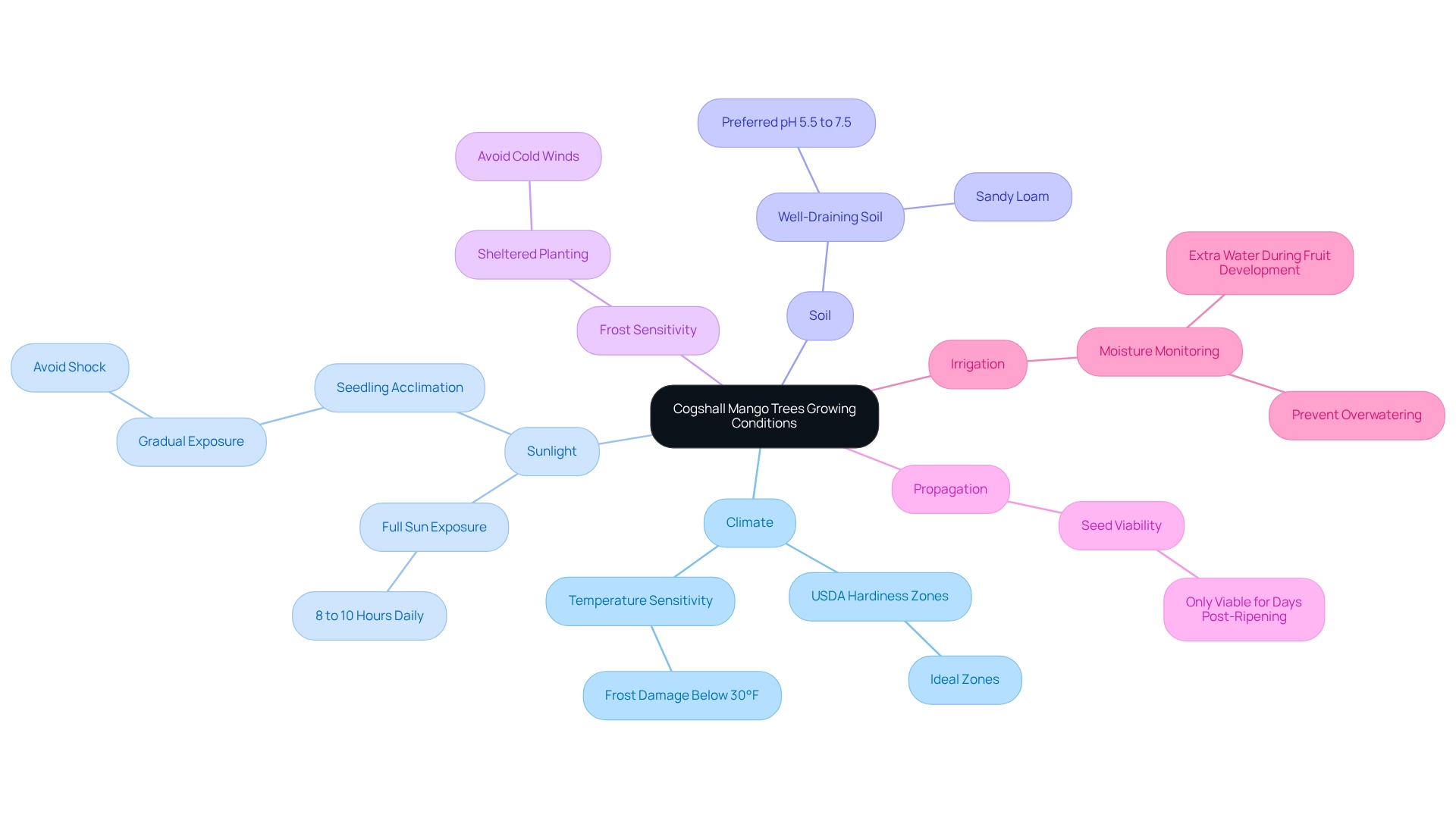
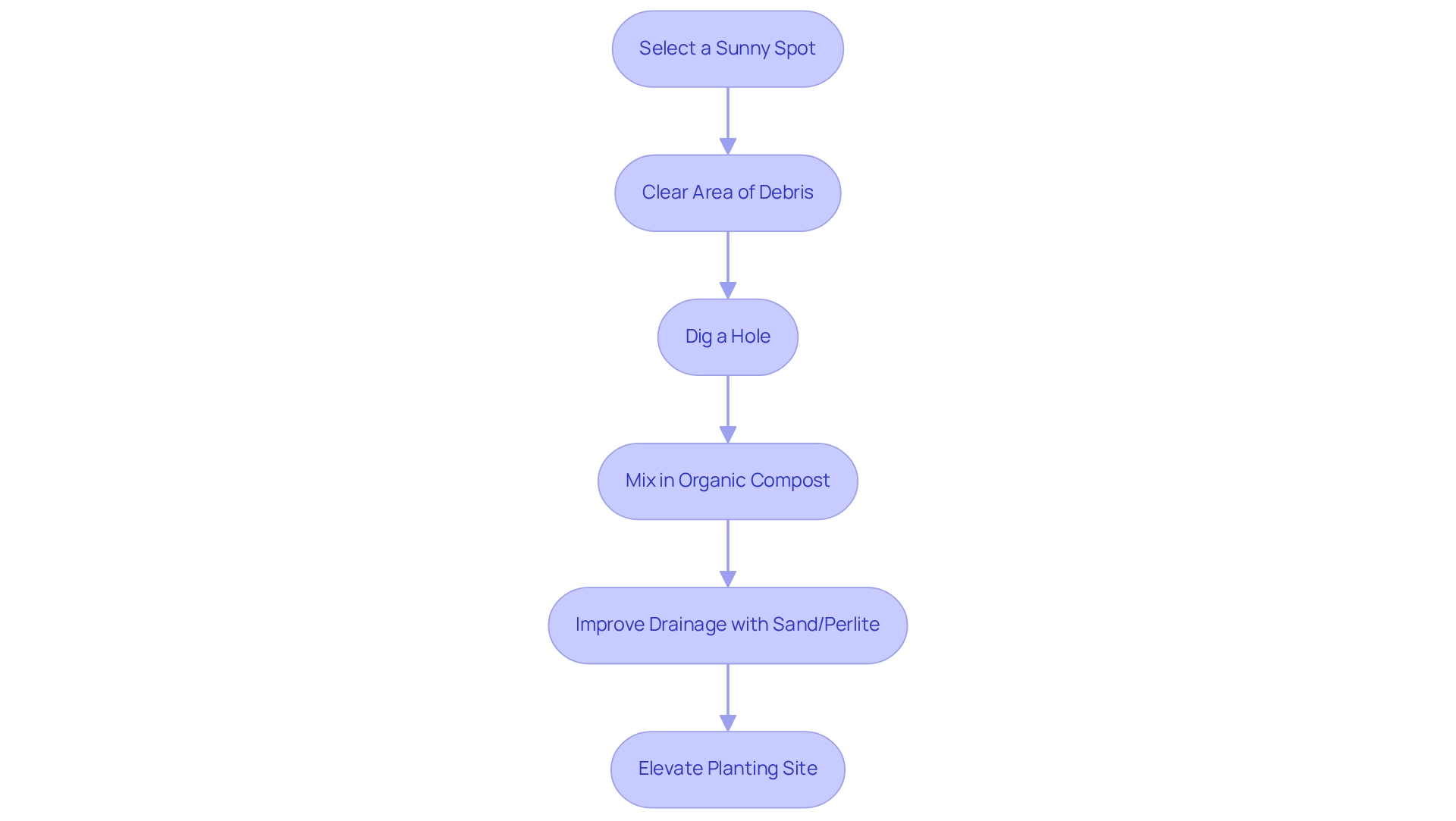
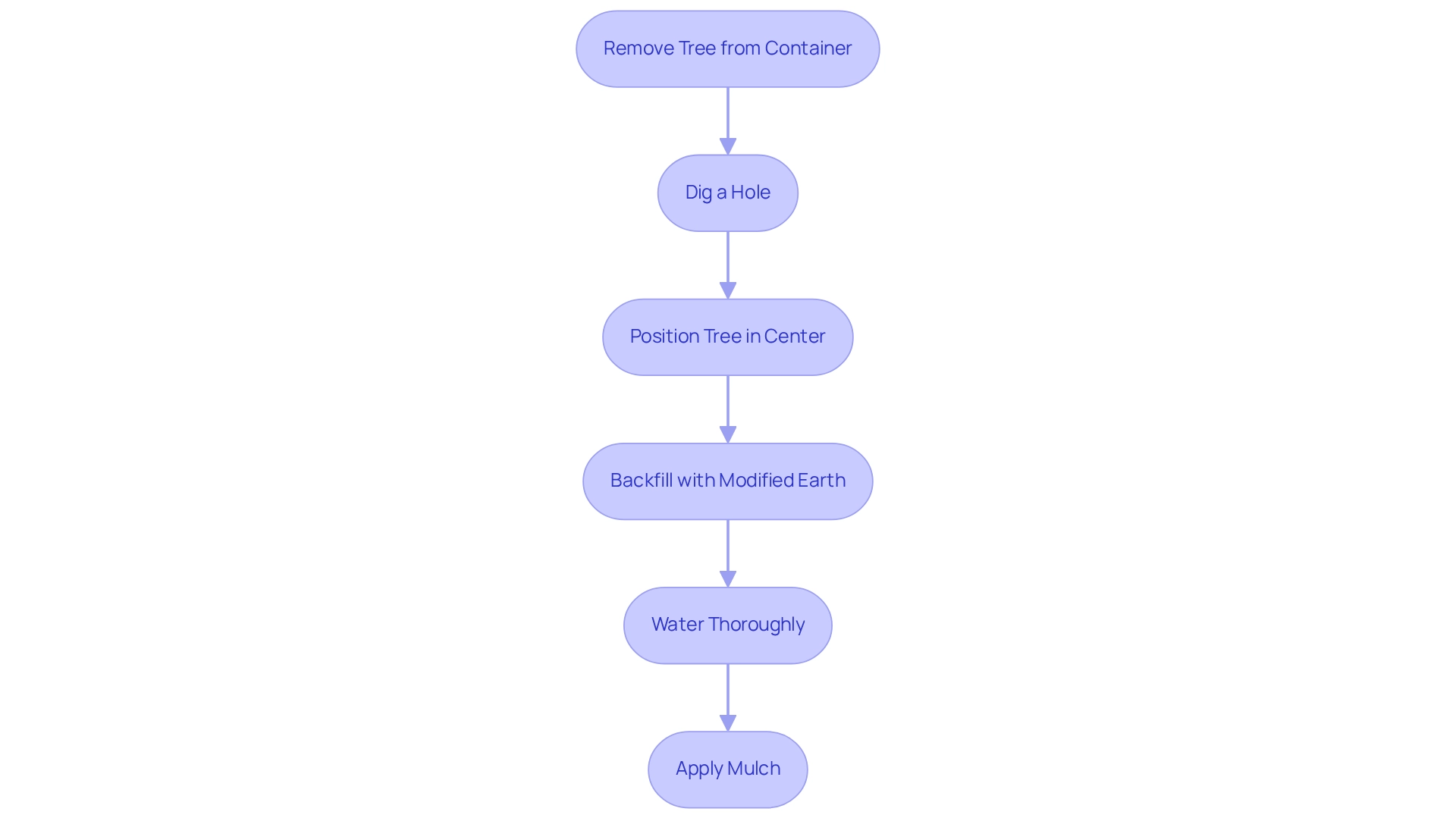
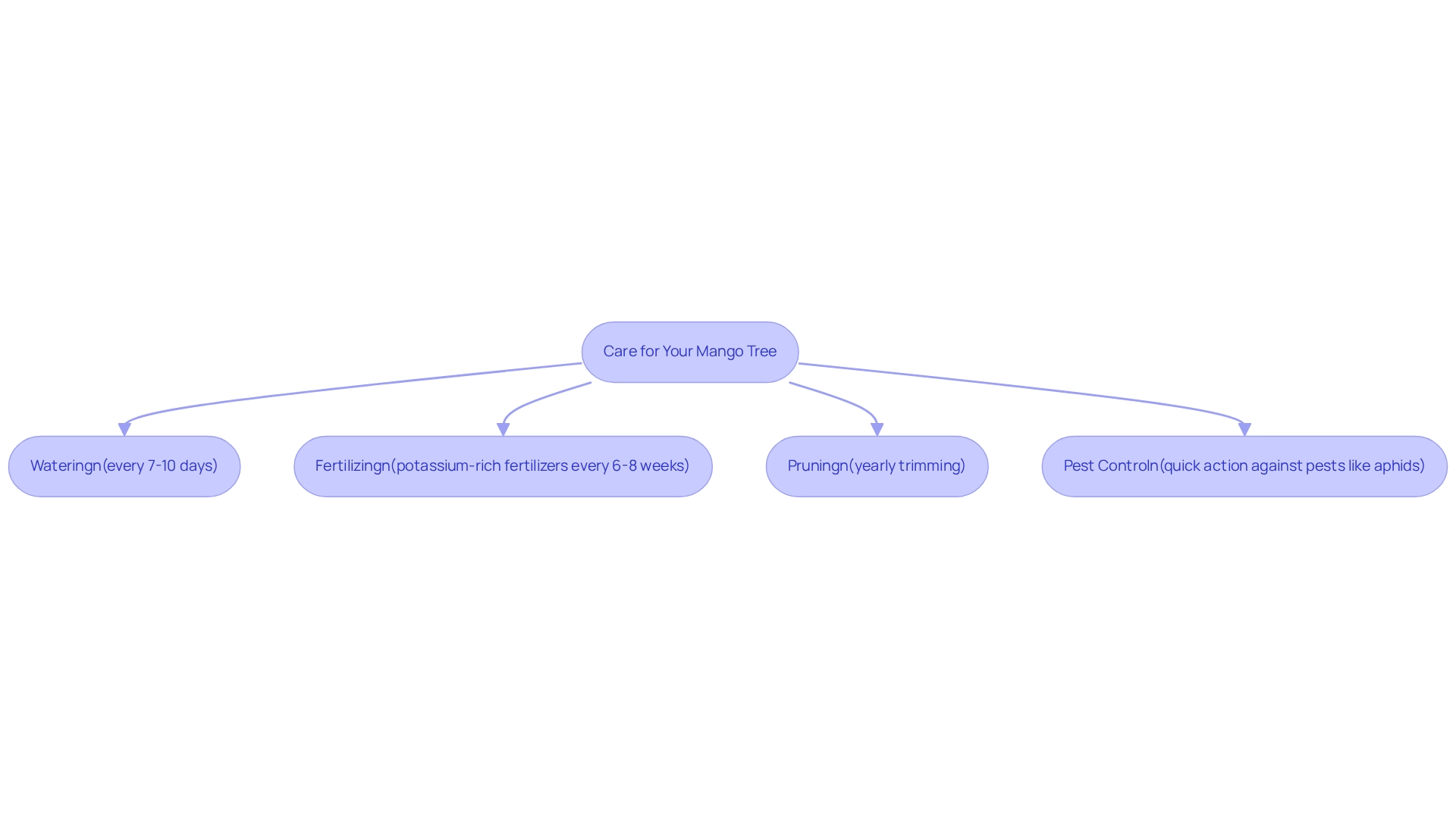
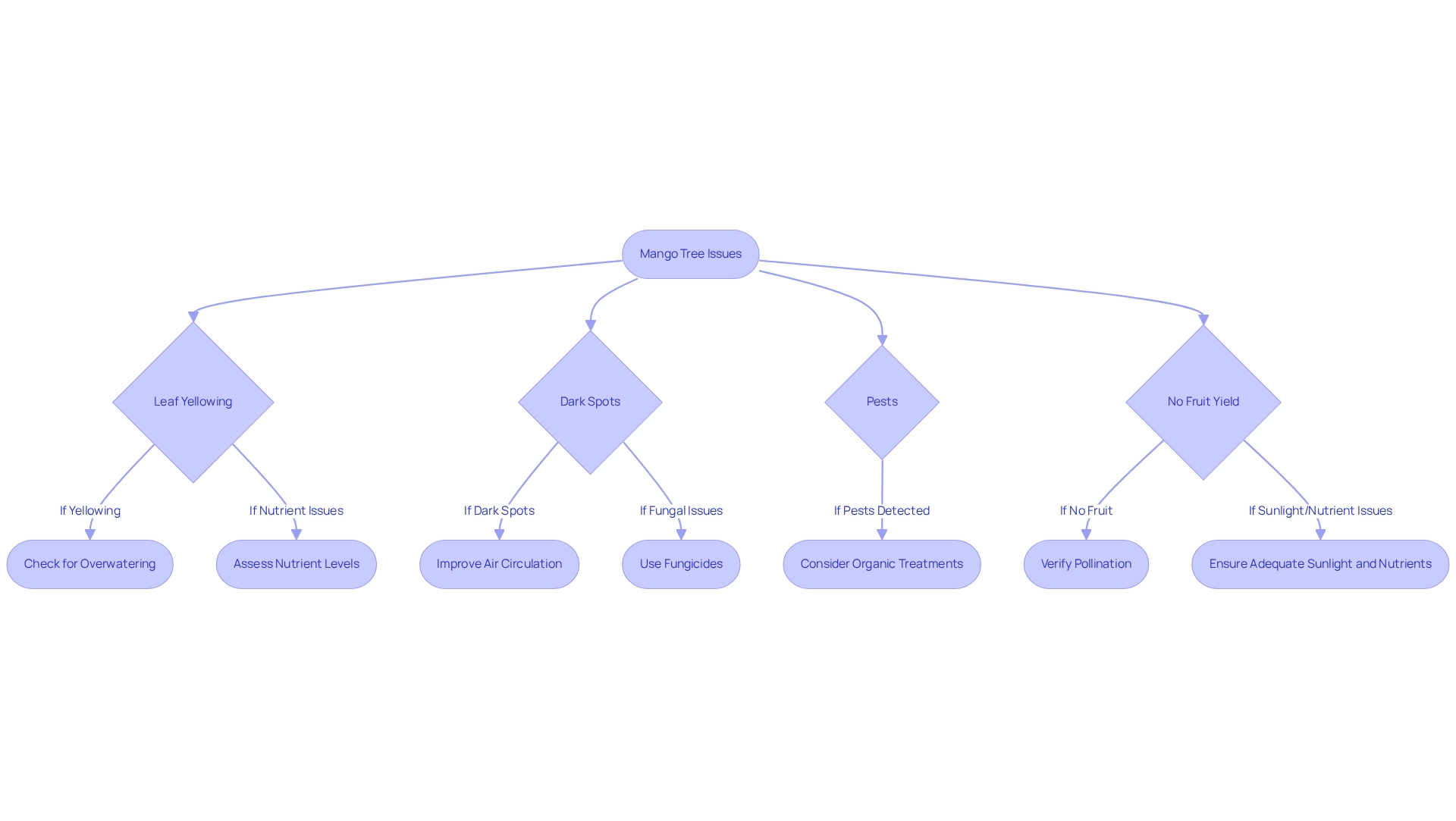





0 comments